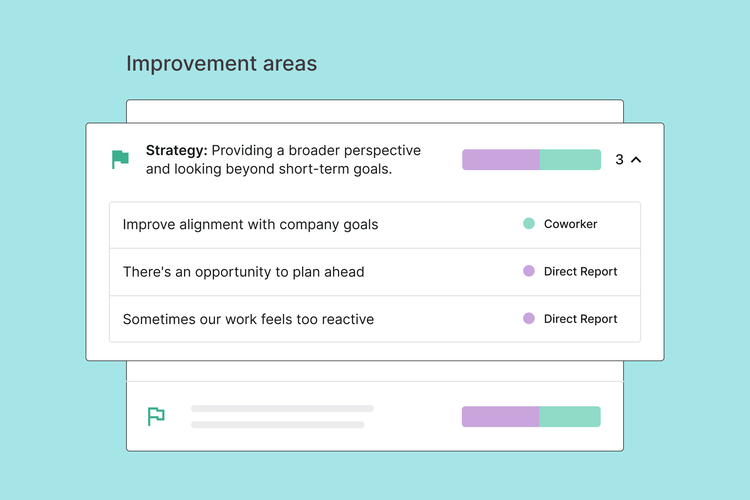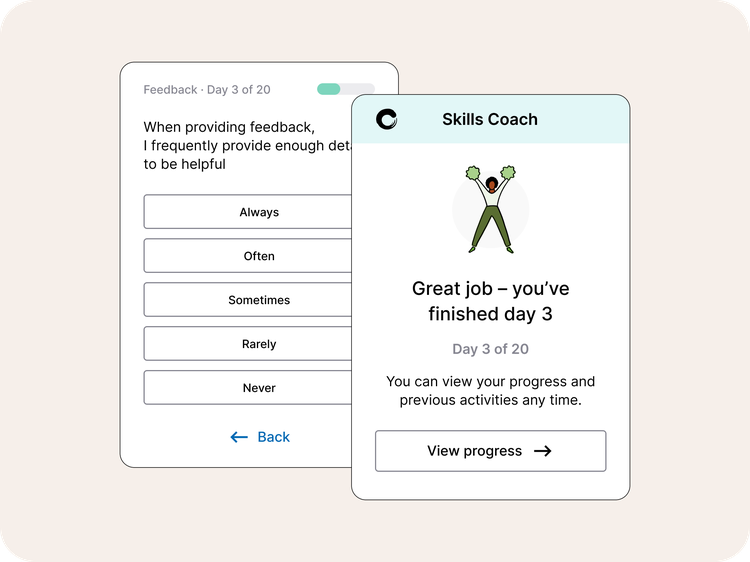
Article
Managers have a million things to do. Between checking incoming messages and wrangling people or projects, there isn’t always a lot of room for learning and development. However, there are ways that you can support the managers at your company to learn new skills to help them become better mentors for their direct reports. One approach is to design manager training opportunities that meet your company’s unique needs.
Growing your company’s L&D offering is a crucial incentive in the fast-paced environment of modern work. In fact, survey respondents in Deloitte’s 2019 Human Capital Management Trends report rated learning as the most important challenge facing the future of work.
Not only are advances in technology disrupting the way we do work, but the very structure of organizations is rapidly changing – from top-down hierarchies to rich networks of teams. In this newer organizational structure, the complexity of work has changed, which also changes the complexity of training the right people at the right time for the right skills.
A recent report from IBM on reskilling notes that “the time it takes to close a skills gap through traditional training has increased by more than 10 times in the past four years, jumping from three days to 36 days.”
Additionally, one Wall Street Journal article highlighted the struggle that companies face when training for new skills this way. “Employers are still trying to master the challenge of mapping the skills of their current workers, identifying the skills required of their future workforce, and filling the gaps between the two. By the time many companies figure out exactly who they need, it’s often too late to invest the necessary time and money into retraining.”
So, what’s getting in the way of training for the future? According to Harvard Business Review, there are three main roadblocks:
With this in mind, what can HR leaders do to help implement new training opportunities for their managers? As a starting point, we compiled our three approaches of choice.
The reason why many HR leaders opt to keep their new manager training in-house is quite simple: most people want an in-person instructor who can thoroughly explain the material and answer any questions they might have.
With this approach, it’s best to have a mix of on-demand material – such as videos and downloadable content – and live, in-person training, as well as a team to support the content and curricula. That way, your people can get the best of both worlds with personalized training and on-demand resources to fit the schedule that best works for them.
The benefits of in-house L&D initiatives are numerous. To start, no one knows your team and their needs better than you do. With your insider knowledge, you can train them based on the specific applications or knowledge gaps you know about your managers and their roles.
One quick way to understand the skills or knowledge gaps on your team is to run an engagement survey. This would allow you to take a closer look at how learning opportunities are perceived at your company:

A second benefit of having in-house training is that you can be more flexible with your training schedule. For example, you can decide how and when it is offered based on your organization’s cultural or cyclical rhythms. This helps better establish and embed L&D programs into your culture, which will enable the learning to better stick with your managers.
Long-term, you’re also able to save money by drawing on the skills of your existing team. In addition to being more expensive, outsourcing new manager training can also cause inefficiencies through overlaps between your employee’s existing skills and the ones offered by the external programs.
However, outsourcing is a perfectly legitimate option, especially when you have limited internal resources, or when you need a highly strategic approach where an external perspective can come in handy.
The first question to answer when considering using a third-party manager training is this: “What are the capabilities that this external training organization could fulfill, and that our internal team couldn’t?”
You might need specialized expert training in a certain area to fill skills gaps in your existing team. Or maybe this third party has delivery capabilities that your team doesn’t yet have, such as remote training, or global reach in multiple languages.
The next consideration is the cost and ROI of outsourcing. Depending on your unique situation, the benefits may or may not outweigh the costs.
One of the most obvious benefits of using a third party is that many L&D organizations are experts in their field. Ramping up your internal knowledge base to meet the needs of an ever-changing landscape can be difficult, and skills of the future are hard to codify into a curriculum. So, subject matter experts are equipped to distribute training quickly and effectively.
Not only are many third-party organizations experts in their particular field, but they’re also experts in L&D itself. This means that they know the most effective tools, processes, and delivery methods to reach, train, and distill information in a way that helps the learning stick with your people for the long term.
Additionally, third parties have a unique ability to offer an objective perspective on your organization. They may be able to spot holes in your L&D program or emphasize knowledge that will be most useful in the future.
Lastly, an external organization can hold your trainees accountable. With feedback, reporting, and other tools to keep teams close to the training, they’re able to give you quantifiable monitoring and program management to sustain its effectiveness.
However, because of cost consideration and intimate organizational knowledge, many companies opt for a blend between effectively using internal capabilities and those of an external source. Choosing this blend would ensure that you’re using your internal resources to their full capacity while leveraging outside help for critical or strategic needs.
At Culture Amp, we’ve opted for the third approach. We use our internal teams and curricula where our internal knowledge and expertise are sufficient or superior, and hire external organizations when we need more expert training.
For instance, we partner with LifeLabs Learning to train our people on specific subjects and simultaneously layer in our cultural expertise to support our unique use case. This ensures that the learning sticks and organically embeds in our specific culture over time.
Specifically, we have worked with LifeLabs to create 1-on-1 and goals templates based on their research, and then slightly modified these frameworks to fit our needs. We also created an internal wiki with all the resources from the workshops, along with notes, links to reading materials, and other resources, to ensure that our people have what they need when they need it.
We then created learning groups for mentors (what we call managers) through which we deliver ongoing content, including recaps from the workshops, and suggestions of things to try in the day-to-day work we’re doing.
Through facilitating Mentor Learning Group sessions, we recap content and invite mentors to get together and roleplay scenarios. This allows the theoretical concepts to be actioned on through relationships and coaching. We also encourage mentors to do manager 360 reviews and get regular feedback. Through this process, they’re able to identify personal areas of opportunity and collect insights on how they’re progressing towards their goals.
Last but not least, we encourage all our managers to participate in Skills Coach – a conversational micro-learning tool that helps make learning a daily practice. In just a few minutes a day, managers can learn and practice the critical skills they need to successfully lead and mentor their direct reports.

Every company’s learning & development journey is different. You might be at a stage where you solely rely on in-house training, are outsourcing all of it to subject matter experts, or are doing a blend of both.
Regardless, what matters is that you trust your instincts to know what myriad of new manager training options to use at your organization. As HR leaders, we need to develop the management training that answers the needs our organizations face today.
